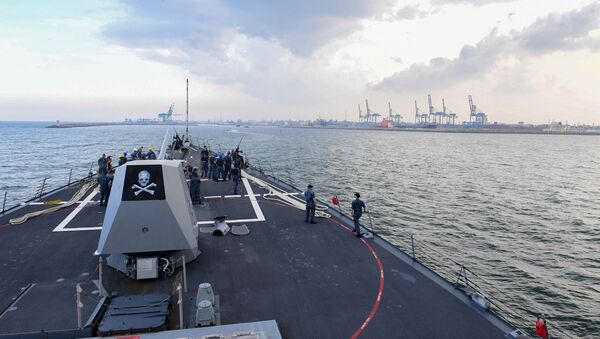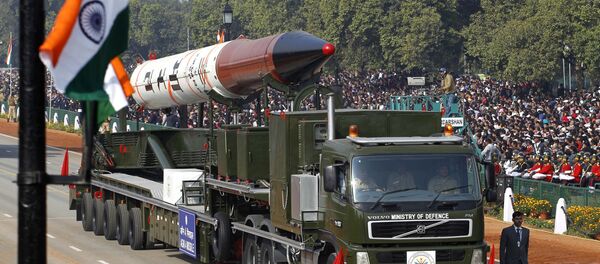New Delhi (Sputnik) — Now, the senior US commander leading the USS Nimitz battle group said the just concluded Malabar exercise was the biggest ever and that it had helped improve interoperability among the navies of India, Japan and the US.
"Perhaps in the future, if we have to come together for real — be it for a disaster relief effort or an anti-piracy operation or, God forbid, if there is an actual crisis in the Indian Ocean, the Japanese would come to assist, the US Navy would come to assist and because of Malabar, we will know each other better, we will be able to cooperate better, and meet any maritime challenges we might face," US Rear Admiral William Byrne said.
Ahead of Malabar exercise, it was widely publicized that China sent its Yuan class conventional diesel-electric submarine in the Indian Ocean with submarine support vessel Chongmingdao and intelligence-gathering ship Haiwingxing. But the navies of India, the US and Japan did not find any such snooping ship.
"It is one of the largest exercises in recent times. We have conducted exercises in all dimensions of warfare — from anti-submarine to anti-surface air operations. The level of complexity has been higher. Our procedures have been streamlined. We are a bit more comfortable and confident working with each other across the spectrum," Rear Admiral Biswajit Dasgupta, flag officer commanding of the Indian Navy's Eastern Fleet, told The Hindu.
The anti-submarine operation has greater significance against the backdrop of the 13 Chinese naval ships which have been tracked over the last two months by Indian naval satellite GSAT-7 and long-range maritime patrol aircraft like P-8I. During the Malabar exercise, several drills to train sailors of India's submarine services to detect underwater threats were held.



